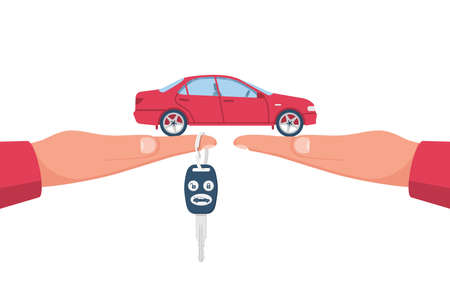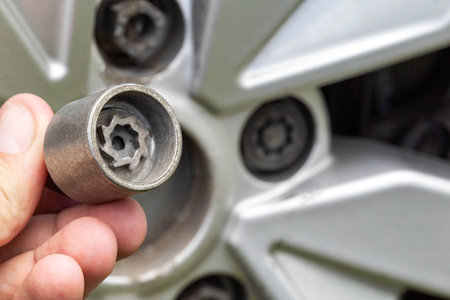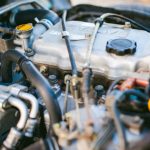1. Introduction to Spring Rates and Dampers
When it comes to your car’s handling, few components are as important as the suspension system. Two key elements that influence how your car responds to the road are spring rates and dampers. Understanding their roles can help you fine-tune your vehicle’s ride quality, stability, and cornering performance.
What Are Spring Rates?
Spring rate refers to the stiffness of a spring, measured in pounds per inch (lbs/in) or newtons per meter (N/m). A higher spring rate means the spring is stiffer, requiring more force to compress, while a lower spring rate results in a softer ride.
Effect of Spring Rates on Handling
| Spring Rate | Handling Characteristics |
|---|---|
| Higher Spring Rate | Improves cornering but reduces ride comfort |
| Lower Spring Rate | Better ride comfort but increased body roll |
What Are Dampers?
Dampers, commonly referred to as shock absorbers, control the movement of the springs by managing how fast they compress and rebound. Without dampers, a car would continue to bounce after hitting a bump, making it difficult to control.
How Dampers Work
Dampers use hydraulic fluid to regulate motion. When the suspension compresses or extends, the fluid passes through valves inside the damper, controlling the speed of movement. This prevents excessive bouncing and ensures tire contact with the road.
The Role of Spring Rates and Dampers in Suspension Tuning
Both spring rates and dampers need to be balanced to achieve the desired driving characteristics. Stiff springs require firmer dampers to prevent excessive bouncing, while softer springs need softer dampers to maintain comfort.
Matching Spring Rates and Dampers
| Spring Rate | Recommended Damper Setting |
|---|---|
| High (stiff) | Firm shocks to control movement |
| Low (soft) | Softer shocks for a smoother ride |
By understanding these components, you can begin to see how modifying them affects your car’s handling and overall performance.
2. How Spring Rates Affect Handling
Spring rates play a crucial role in determining how your car handles different driving conditions. The stiffness or softness of your springs directly affects ride quality, body roll, and weight transfer during acceleration, braking, and cornering.
Stiff Springs vs. Soft Springs
Choosing between stiff and soft springs involves a trade-off between comfort and performance. Here’s a quick comparison:
| Spring Type | Ride Quality | Body Roll | Weight Transfer |
|---|---|---|---|
| Stiff Springs | Harsher, more road feedback | Reduced body roll | Less weight transfer, more stability |
| Soft Springs | Smoother, more comfortable | More body roll | Greater weight transfer, can reduce stability |
Impact on Ride Quality
Stiff springs provide a firmer ride, allowing better handling and control at high speeds or during aggressive driving. However, they also transmit more road imperfections to the cabin, making the ride harsher. Soft springs, on the other hand, absorb bumps better, providing a smoother driving experience but at the cost of reduced cornering stability.
How Spring Rates Influence Body Roll
Body roll occurs when the car leans to one side during turns. A stiffer spring setup helps to minimize this, keeping the car flatter while cornering. This is ideal for performance driving, where maintaining stability and tire contact is critical. In contrast, softer springs allow more body roll, which can make the car feel less controlled in sharp turns.
Weight Transfer and Handling Balance
Weight transfer refers to the shifting of the car’s mass during acceleration, braking, and cornering. Stiffer springs reduce weight transfer, keeping the car more balanced and responsive, especially in performance-oriented setups. Softer springs allow for greater weight movement, which can improve traction under certain conditions but may also lead to unpredictable handling in high-speed maneuvers.
Choosing the Right Spring Rate
Finding the right balance between stiffness and softness depends on your driving needs. For daily driving and comfort, softer springs are typically preferred. For track use or spirited driving, a stiffer setup enhances control and stability. Many aftermarket suspension systems offer adjustable spring rates, allowing you to tailor the handling to your preference.
Final Thoughts on Spring Rates
Understanding how spring rates affect handling helps you make better suspension choices for your car. The key is to match the setup with your driving style and intended use, ensuring optimal performance without sacrificing comfort more than necessary.

3. Three, The Function of Dampers in Vehicle Dynamics
Dampers, also known as shocks and struts, play a critical role in controlling your car’s suspension movement. They help manage how your vehicle responds to road imperfections, cornering forces, and weight transfer during braking and acceleration. Without dampers, your car’s springs would bounce uncontrollably, making for a rough and unstable ride.
How Dampers Work
Dampers use hydraulic fluid and internal valves to control the rate at which your suspension compresses and rebounds. When your car hits a bump, the springs absorb the impact, and the dampers regulate how quickly the springs return to their normal position. This prevents excessive bouncing and keeps your tires in contact with the road.
Key Functions of Dampers:
- Control Spring Motion: Prevents excessive bouncing by regulating spring compression and rebound.
- Improve Ride Comfort: Absorbs road imperfections, reducing vibrations felt inside the cabin.
- Enhance Handling Stability: Keeps tires in contact with the road, improving grip and control.
- Reduce Body Roll: Limits excessive movement when cornering or braking hard.
Types of Dampers
There are different types of dampers designed for various driving conditions and performance needs. Here’s a comparison of the most common types:
| Type | Description | Best For |
|---|---|---|
| Twin-Tube | A basic design with an inner and outer tube, offering a smooth ride at an affordable cost. | Daily driving, comfort-oriented vehicles |
| Monotube | A single-cylinder design that provides better heat dissipation and more precise damping control. | Performance cars, spirited driving |
| Adjustable Dampers | Allows drivers to adjust damping stiffness for customized handling and comfort. | Track cars, sports cars |
| Electronic Dampers | Uses sensors to automatically adjust damping based on driving conditions. | Luxury cars, high-tech performance vehicles |
How Dampers Improve Stability and Comfort
By controlling the movement of your suspension, dampers influence how stable your car feels at high speeds and around corners. Well-tuned dampers ensure that weight transfers smoothly during braking and acceleration, preventing sudden shifts that could unsettle your car. They also reduce vibrations and harshness from rough roads, making for a more comfortable ride.
Signs Your Dampers May Be Worn Out:
- Excessive bouncing after hitting a bump
- Increased body roll when cornering
- Longer stopping distances due to poor weight transfer control
- Uneven tire wear indicating poor road contact
- A rough or uncomfortable ride even on smooth roads
Final Thoughts on Dampers Role in Handling
Upgrading or maintaining your car’s dampers can significantly enhance ride quality and handling. Whether youre looking for better comfort during daily commutes or improved responsiveness on the track, choosing the right type of dampers makes a noticeable difference in suspension performance.
4. Balancing Spring Rates and Damping for Performance
To achieve the best handling and drivability, its essential to strike the right balance between spring rates and dampers. If your springs and dampers are mismatched, your car may feel too stiff, too soft, or unpredictable in corners.
Why Spring and Damper Matching Matters
Springs determine how much a car compresses and rebounds when weight shifts during acceleration, braking, and cornering. Dampers (shock absorbers) control the speed of that movement to ensure stability. If these components are not properly matched, your cars handling can suffer.
Effects of Incorrect Spring and Damper Pairing
| Spring & Damper Combination | Handling Characteristics |
|---|---|
| Soft Springs & Over-Damped | Harsh ride, poor suspension travel, reduced traction on uneven roads |
| Soft Springs & Under-Damped | Bouncy ride, excessive body roll, delayed weight transfer |
| Stiff Springs & Over-Damped | Harsh ride, reduced grip over bumpy surfaces, unstable in corners |
| Stiff Springs & Under-Damped | Uncontrolled rebound, erratic handling, poor high-speed stability |
Finding the Right Balance
The goal is to select springs and dampers that complement each other. A well-matched setup provides controlled weight transfer, predictable handling, and improved cornering stability. Adjustable dampers can help fine-tune your suspension by increasing or decreasing damping force based on road conditions and driving style.
Key Factors to Consider
- Driving Style: Daily driving, track use, or spirited canyon runs require different setups.
- Spring Stiffness: Stiffer springs improve cornering but reduce ride comfort.
- Damping Adjustability: Adjustable shocks allow you to dial in comfort or performance.
- Road Conditions: Rough roads benefit from softer springs and dampers for better control.
Performance vs. Comfort
Its important to find a balance between performance and ride comfort. Cars used for daily driving may benefit from a softer setup, while track-focused builds often use stiffer springs with aggressive damping to maximize grip and responsiveness.
General Setup Recommendations
| Application | Recommended Spring & Damper Setup |
|---|---|
| Daily Driving | Moderate spring rates with well-matched dampers for comfort and control |
| Spirited Driving | Stiffer springs with adjustable dampers to fine-tune responsiveness |
| Track Use | Aggressive spring rates with high-performance dampers for maximum handling |
4. Final Thoughts
By carefully selecting spring rates and dampers, you can achieve a balanced suspension setup tailored to your driving needs. Whether youre looking for comfort, better handling, or a track-ready setup, the right combination will enhance your car’s performance while keeping it predictable and enjoyable to drive.
5. Adjustable Suspension: Pros and Cons
Adjustable suspension systems, such as coilovers and dampers, offer car enthusiasts the ability to fine-tune handling characteristics for different driving environments. Whether youre aiming for a stiffer setup for track days or a more comfortable ride for daily driving, adjustable suspension provides flexibility. However, there are both advantages and disadvantages to consider.
Benefits of Adjustable Suspension
1. Customizable Ride Quality
One of the biggest advantages of adjustable suspension is the ability to change ride stiffness and height to match personal preferences. This means you can soften the ride for daily commuting and stiffen it up for performance driving.
2. Improved Handling
By adjusting the spring rates and damping levels, you can enhance cornering ability, reduce body roll, and maximize tire contact with the road. This is particularly useful for track enthusiasts who need precise control over their cars dynamics.
3. Optimized Performance for Different Conditions
If you frequently switch between street and track driving, adjustable coilovers allow you to configure your suspension for each specific need, saving the hassle of excessive modifications.
4. Aesthetic Benefits
Lowering your car with adjustable suspension can give it a more aggressive stance, improving both aerodynamics and appearance.
Drawbacks of Adjustable Suspension
1. Higher Cost
Adjustable suspension systems are generally more expensive than factory or non-adjustable aftermarket alternatives. High-quality coilovers can be a significant investment.
2. Complexity of Setup
Properly tuning an adjustable suspension takes time and knowledge. If settings are not optimized, you might end up with a rough ride or poor handling characteristics.
3. Increased Maintenance
Adjustable coilovers and dampers may require frequent adjustments and servicing to maintain performance. Exposure to dirt, road grime, and weather conditions can also lead to premature wear.
4. Ride Comfort Trade-off
While adjustable suspension allows for changes in stiffness, it often sacrifices ride comfort, especially when set to a more aggressive, track-oriented setup.
Comparison of Adjustable vs. Non-Adjustable Suspension
| Feature | Adjustable Suspension | Non-Adjustable Suspension |
|---|---|---|
| Customization | Highly adjustable (ride height, damping, stiffness) | Limited or no adjustability |
| Handling | Optimized for track or street use | Set for general-use comfort |
| Cost | Higher initial cost | More affordable |
| Maintenance | Requires regular adjustment & servicing | Lower maintenance |
| Ride Comfort | Can be stiff and harsh if not properly tuned | More comfortable for daily driving |


